In the era of SoundCloud, Mixcloud, YouTube, the commercial DJ mix no longer has the cachet it once did. In the 90s and 00s, however, they were one of the defining aspects of electronic dance music, helping to establish names like Kruder & Dorfmeister, David Holmes, Carl Cox, 2manydjs and co. Ben Cardew reflects upon this golden age for mixing it up and discovers that thanks to ongoing series like DJ-Kicks and fabric presents there’s still life in the concept…
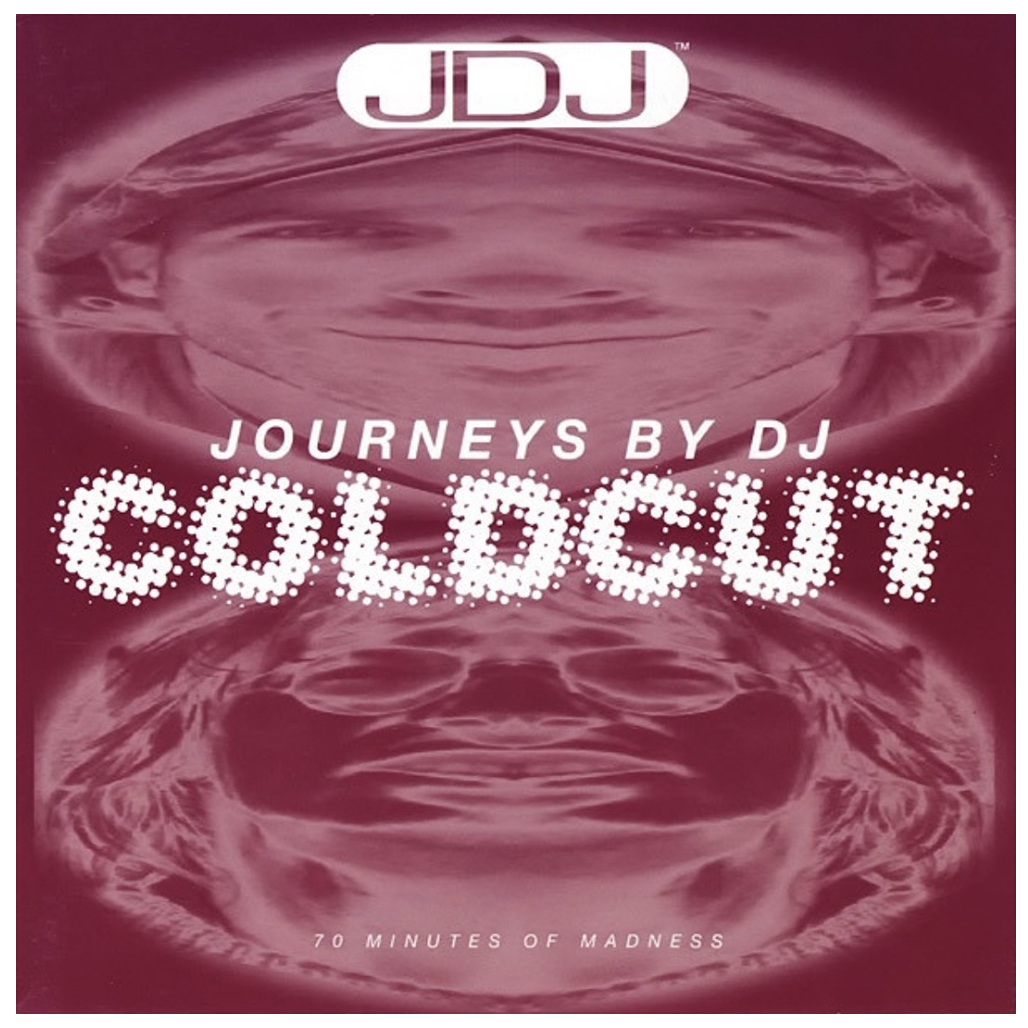
Two bottles of cheap red wine, a pasta recipe from Jamie Oliver and Kruder & Dorfmeister’s ‘DJ-Kicks’: these were the three key ingredients of any student dinner party in the late-90s. That’s how big DJ mix albums were back then: utterly mainstream musical releases to tap an absent toe to, as you awaited your mate’s vegetarian lasagne.
And why not? Dance music was booming; CD sales stratospheric; and DJ culture was everywhere. Mix series like Journeys by DJ and !K7’s DJ-Kicks were household names and everyone had their favourite after-party gem or dinner table destroyer.
In 2025, mixes are more prominent than ever. SoundCloud, Mixcloud, YouTube and Apple Music are heaving with them. Mixes.db, the self-proclaimed “database for DJ sets, podcasts, radio shows and more”, has 301,000-plus mix pages and the number is rising every day.
For the commercially released DJ mix album, though, 2025 tells a different story. Journeys by DJ is but a memory; and, while DJ-Kicks and fabric presents keep faithfully on, there hasn’t been a mix album that has gone really mainstream since Caspa and Rusko’s ‘FABRICLIVE.37’ in 2007.
You could argue that the DJ mix album has become a victim of its own success. Recorded mixes have existed for as long as DJs: from hip hop mixtapes in the 1970s, to Jamaican sound system cassettes, to people recording The Wizard off Detroit radio in the 1980s. In the UK, the legendary ‘Street Sounds Electro’ compilations were an early example of a commercial mix, although the practice really took off with the tape pack recordings from raves, which were ubiquitous in the early-90s.
As the decade progressed, the mix album became increasingly legit. ‘Mixmag Live Volume 1’, with Carl Cox and Dave Seaman, was released in 1992; the Journeys by DJ series launched in 1993 and DJ-Kicks followed in 1995. Soon the classic releases started to add up: Laurent Garnier’s ‘Mixmag Live Volume 19’ and ‘Coldcut’s Journeys By DJ (70 Minutes Of Madness)’ in 1995; Jeff Mills’ ‘Live at the Liquid Room, Tokyo’ and Kruder & Dorfmeister’s ‘DJ-Kicks’ in 1996; 2manydjs’ ‘As Heard On Radio Soulwax Pt. 2’ in 2002; we all have our favourites. And some of them became very popular indeed, with Kruder & Dorfmeister’s ‘The K&D Sessions’ apparently selling one million copies worldwide.
With commercial success, went artist triumph. For some artists – Kruder & Dorfmeister, LTJ Bukem – a commercial mix CD arguably became their defining release. Coldcut are UK house pioneers and legendary beats producers. But what is the one record you would pull out to show people what they do? ‘People Hold On’? Or ’70 Minutes of Madness’?
For artists, too, these releases were hugely important. Coldcut’s Jonathan More says that ’70 Minutes of Madness’ was like “a validation” for the group, who had been regularly spinning two-hour sets on their Kiss FM show Solid Steel with PC (Patrick Carpenter) and Strictly Kev (Kevin Foakes), as well as in clubs. More, Coldcut partner Matt Black, Carpenter and Foakes spent “four days to a week” preparing ’70 Minutes of Madness’, although commercial concerns proved a headache. Sony apparently refused to license Coldcut’s own 1989 hit ‘People Hold On’ for the album, scuppering a planned ‘Doctor Who’/‘Planet Rock’/‘People Hold On’ section.

The mix’s fêted use of Coldcut’s own ‘Beats and Pieces’ at 45rpm, meanwhile, was inspired by an incident at a club in the West Country. “Kev and I got asked to do a club in Cornwall somewhere,” More relates. “We got a bunch of trip hop and slow beats and hip hop. We rocked up at this place and it was full-on monging, gum-chewing, acid house music. And we were like: ‘Oh dear, what are we going to do?’ So, Kev brilliantly goes: ‘I’ve got an idea.’ And he bangs on an Aphex Twin tune and then mixes ‘Beats and Pieces’ in, well sped up and the crowd went berserk.”
It was a similar story with Kruder & Dorfmeister’s ‘DJ-Kicks’. The Austrian duo had been DJing intensively since the success of their ‘G-Stoned’ EP in 1993 and the songs in their mix reflect their typical selection of the time, albeit with a twist.
“On the way to Berlin [to meet !K7], we said, if we are going to do it, we want to do it completely different than anybody did before,” Peter Kruder explains. Rather than a brash, colourful sleeve, the duo wanted something shot in nature; and the record wouldn’t be a standard live DJ mix, but something they could re-work in the studio, adding effects and making edits on Pro Tools.
“We literally dubbed every song that is on there, so that the versions are really different from the original versions that everybody knew,” says Kruder. “It was quite elaborate. I think it took us two days, three days, to put the whole thing together.”
Going to such extremes was not, perhaps, typical. But !K7 did encourage artists to think differently. “Built into the DNA of DJ-Kicks was a mix, combined with new music from the compiler,” explains !K7 head of marketing David Coleby and ensuring the presentation is closer to an album, the compilers have all taken their own interpretations of this and run with it.”
For Kruder & Dorfmeister, this was time well spent. “I talked with Stefan Struever [the !K7 employee who first asked them to record a mix] about what he thought the record would sell,” says Kruder. “And he said to me: ‘Carl Craig just sold 50,000. But that’s Carl Craig!’” (Laughs)
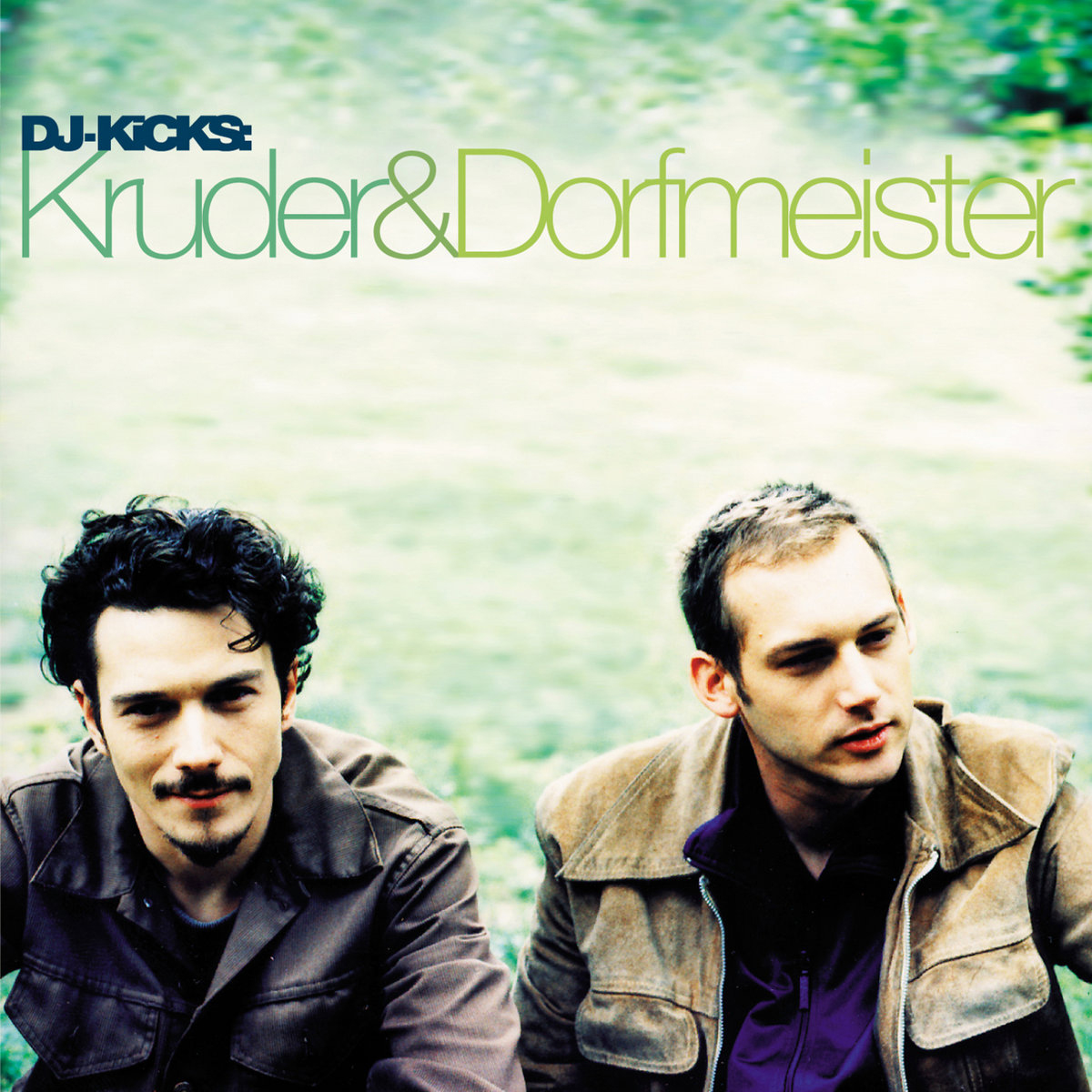
Kruder & Dorfmeister’s ‘DJ-Kicks’ has now sold more than 250,000 copies in Europe alone. But even that was eclipsed by the success of ‘The K&D Sessions’, a second mix album for !K7 that included 19 of the duo’s remixes and two original tracks. Remarkably, the duo are currently touring ‘The K&D Sessions Live’ across “various beautiful locations” around Europe and the US. “Nobody ever did a live version of a remix album,” says Richard Dorfmeister, “Normally you play your own stuff. But to play a remix album live, this is really something new.”
The first kink in the DJ mix armour came in the late-90s, when the UK’s dance music magazines started to routinely include covermount mix CDs with their monthly issues. By the turn of the millennium this had become standard, with big-name DJs like Roger Sanchez, Cassius and Paul van Dyk mixing CDs for Mixmag and Muzik.
While perhaps annoying for labels, this wasn’t a hammer blow to their mix sales, with Fabric launching its fabric and FABRICLIVE mixes in 2001. The blow would soon follow, though, with the launch of YouTube, SoundCloud and Mixcloud in 2005, 2007 and 2008 respectively.
The effect wasn’t immediate. But it wasn’t long before DJs, labels and music fans discovered that they could easily distribute their own mixes, reaching potential audiences in the millions. And if online mixes weren’t easily monetisable, it did remove the headache of licensing tracks, printing CDs and finding distribution.

The launch of dedicated music streaming platforms like Spotify and Apple Music has also contributed. The complicated licensing deals around commercial mix CDs mean that many are still unavailable on streaming. But Hiroki Beck, head of labels at Fabric, explains that streaming services have essentially turned music fans into DJs and curators, allowing them to create their own dedicated playlists.
This wasn’t the end for DJ mix albums either. But it did mean that commercial mix CDs needed to up their game if they wanted to stand out from the millions of online mixes. Often this would mean DJs putting exclusive tunes on to their mixes. But a new concept could also work.
This is what Paul Rose, aka Scuba, did in 2011, when he was called on to compile his own DJ-Kicks mix. “I’ve been a fan of the series, particularly the Kruder & Dorfmeister one,” he says. “So being asked to do that was great and I spent a lot of time on it. It’s a very conceptual mix: each tune slows down slightly and there’s a lot of piecing it together.” This was a nod to the SUB:STANCE parties in Berlin that Scuba had been playing, where he would slow the bpm at the end of the night.
As music sales in general fell in the 2000s, many mix album series slowed their release schedules or gave up the ghost. The last Journeys by DJ was released in 2007 on download only; the Global Underground series took a four-year break between ‘041: James Lavelle, Naples’ and ‘042: Patrice Bäumel, Berlin’; and fabric and FABRICLIVE both reached their 100th – and final – album releases in autumn 2018.
“It was like a full-circle moment for the series, ending on 100 each,” Beck says. “But also, CD sales were very much on the decline. And I think the cost of the tins [in which the Fabric CDs were packaged] itself was untenable as well.”

Even then, the company was planning for the fabric presents series, which debuted in February 2019. “You do get the music fans that are collectors and still want that physical product,” says Beck. The focus with fabric presents, in fact, is largely the vinyl market: each release comes as a mixed CD and download - which is also released to streaming, sometimes months after the physical debut - as well as a vinyl edition with a selection of unmixed tracks.
Beck compares the fabric presents release strategy to “a mini album campaign format”. “We release four a year but treat these mixes with a bit more planning and marketing spend; we release a few singles off these mixes. We will always ask the artists to provide their own original tracks as well. So, in a way, lengthening these campaigns,” he says.
You can see why this appeals to artists and fabric presents has attracted some big names, including Bonobo, Chase & Status and, most recently, Laurent Garnier. Both Rose and More say they would definitely mix a commercial CD in 2025, were they asked. But would they buy one?
“I don’t know,” says Rose. “People always talk about physical product now and how it’s nice to own something. Personally, I don’t really like owning stuff that much, just anything. I’m not too big on possessions.”
“It is a shame that DJ mixes have become so devalued,” he adds, “but I think that’s just a reflection of the fact that music is devalued more generally.”
Clearly, there still is a market for DJ mix albums in 2025. Collectors love the physical product, while some mixes perform extremely well on streaming. More than half of the tracks on ‘fabric presents Chase & Status’ have passed half a million streams on Spotify, with 10 racking up more than one million plays. “If it flies [on streaming] then that is basically paying for all the other projects,” says Beck.
‘fabric presents Chase & Status’ is not, perhaps, the kind of mix that unites tribes, lights up dinner parties and gets endlessly discussed at the afters, like ‘70 Minutes of Madness’ or ‘As Heard On Radio Soulwax Pt. 2’ before it. But the dance music world in general is so fractured in 2025, that it is hard for any release to unite listeners like these records once did, be they artist albums, compilations or mixes. So don’t be misled: 50 years after the birth of hip hop, the DJ mix album isn’t dead or even resting; it’s right there, in the record store, on Spotify and even in a fancy concert hall, waiting for you to lend an ear.
30 Mixes Of Madness
Coldcut: ‘Journeys by DJ: 70 Minutes of Madness’ (1995)
The daddy. A sonic adventure that swings from jungle to ambient, techno to the ‘Dr. Who’ theme tune. Often voted the best mix ever, ‘70 Minutes of Madness’ inspired a generation of DJs.
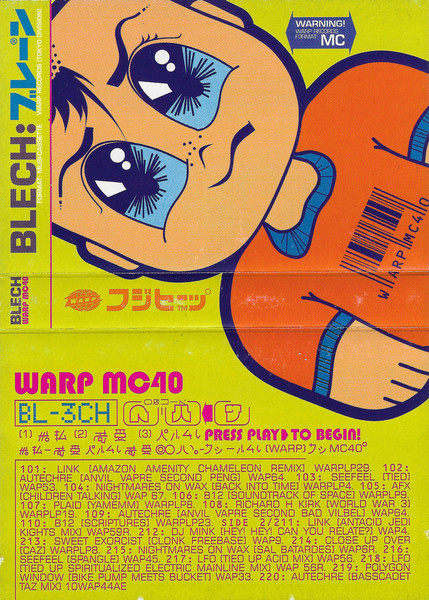
Various: ‘Blech’ (1995)
A mixtape, no less, in which Coldcut associates Strictly Kev and PC stamp their Day-Glo imprint all over the Warp Records catalogue, creating what may be the most anarchic record in the label’s catalogue.
LTJ Bukem: ‘Logical Progression’ (1996)
Logical Progression is Bukem’s defining statement, two discs of soulful, floating jungle from the Good Looking crew that was everywhere in 1996. The album helped drum’n’bass to break new commercial ground, while staying absolutely true to its roots.
See also: ‘Progression Sessions Vols 1–10’.
The Chemical Brothers: ‘Live at the Social Volume 1’ (1996)
Before everything else The Chemical Brothers were DJs, bringing together disparate influences that thumbed their nose at the restraints of four-to-the-floor techno. ‘Live at the Social Volume 1’ was the duo’s first commercial mix and captured a newly eclectic wave of British clubbing.

Jeff Mills: ‘Live at the Liquid Room – Tokyo’ (1996)
In the early-1990s everyone knew that Jeff Mills was the best techno DJ, even if few people had heard him spin. That changed with ‘Liquid Room’, two discs that redefined what a DJ could do, as Mills pushed his records to breaking point.
See also: ‘Exhibitionist - A Jeff Mills Mix’.
Kruder & Dorfmeister: ‘DJ-Kicks: Kruder & Dorfmeister’ (1996)
Kruder & Dorfmeister’s ‘DJ-Kicks’ broke the Austrian act by capturing the duo’s laidback-but-danceable, jazzy-but-twisted mixture of downtempo, jungle beats and dub. ‘The K&D Sessions’, which followed in 1998, was even bigger, selling one million copies worldwide.
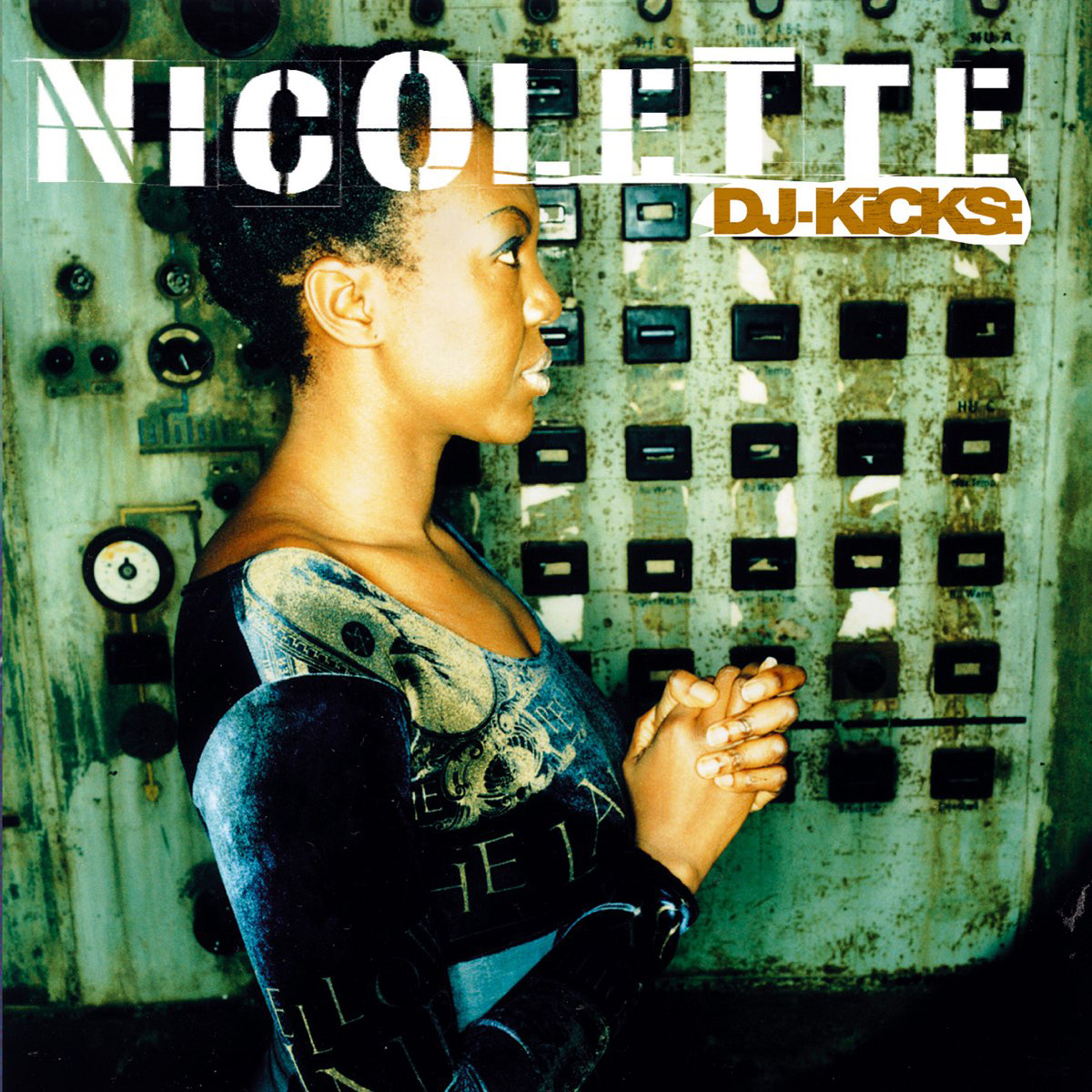
Nicolette: ‘DJ-Kicks: Nicolette’ (1997)
Nicolette’s ‘DJ-Kicks’ is a rare example of a non-DJ mix, with Nicolette primarily known for her singing, rather than mixing skills. The results were astounding: a head-spinning mixture of jungle, techno and industrial that wove a picture of a singular artist.
See also: DJ-Kicks from Playgroup, Carl Craig, The Glimmers, Hot Chip, Moodymann, Steven Julien… the list is endless.
Derrick Carter: ‘Mixmag presents The Cosmic Disco’ (1997)
Derrick Carter’s 1997 CD for Mixmag might be the best pure house mix ever, a fantastically inventive 68 minutes of boompty heaven from an absolute master of the art.
See also: fabric 56 and Carter’s ‘Sessions’.
Dave Rofe/Jon Dasilva/Pete Robinson: ‘Viva Haçienda’ (1997)
Released just before The Haçienda lost its licence, ‘Viva Haçienda’ looks back at 15 years of the Manchester club. The result is the funkiest possible history lesson: 44 tracks of classic dance music united by a Mancunian thread.

Gilles Peterson & Norman Jay: ‘Desert Island Mix (Journeys By DJ)’ (1997)
The record’s cover – a literal treasure chest – says it all. ‘Desert Island Mix’ is a selection of classic and contemporary tracks from two of the UK’s most keyed-in DJs, 35 genre-elusive gems most listeners would happily be marooned with.
See also: Peterson’s ‘Worldwide’ mix series; Norman Jay: ‘Desert Island Mix Part 2’.
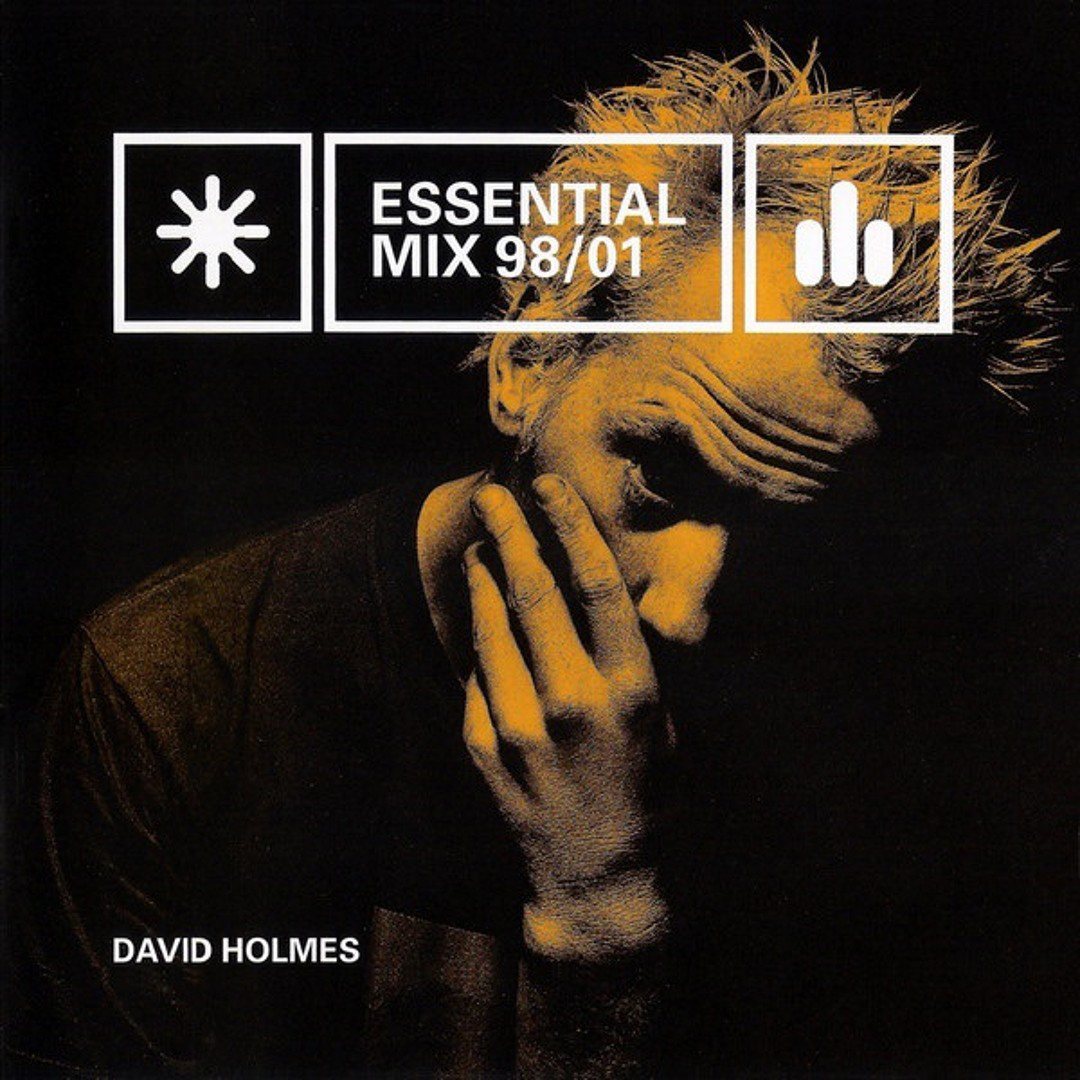
David Holmes: ‘Essential Mix 98/01’ (1998)
‘Essential Mix 98/01’ was so influential in its note-perfect digging that it (almost) single-handedly made classics out of songs like Marlena Shaw’s ‘California Soul’. The record’s ultra-cinematic charms also paved the way for Holmes’ pivot into movies.
Richie Hawtin: ‘Decks, EFX & 909’ (1999)
Made with turntables, effects box and 909, Richie Hawtin’s second commercial mix blurred the lines between artist album and DJ mix, a distinction he would obliterate on 2001’s ‘DE9: Closer to the Edit’. ‘Decks, EFX & 909’ is famously intense but surprisingly groovy.

Larry Levan: ‘Live at the Paradise Garage’ (2000)
Larry Levan was the DJ’s DJ. Thanks to the release of Strut’s ‘Live at the Paradise Garage’, his legendarily empathetic and often idiosyncratic selection skills went public, bringing listeners closer to the Paradise Garage than any other album could dare to.
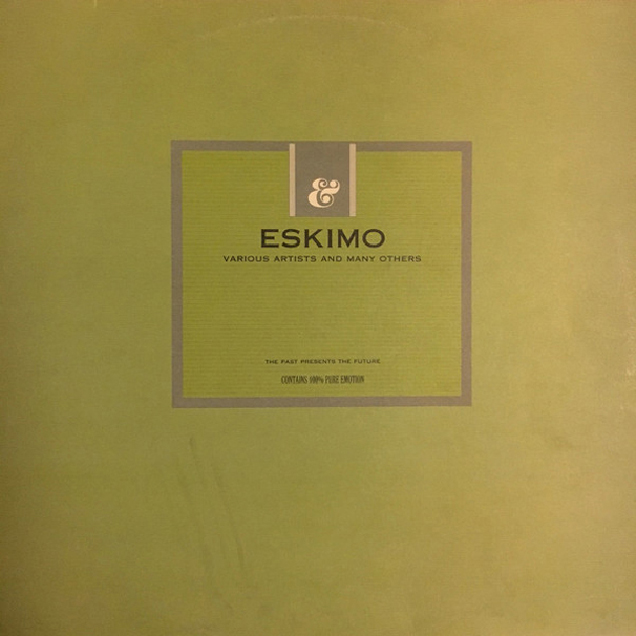
Eskimo: ‘Various Artists and Many Others Vol 1’ (2000)
The first compilation from Belgian label Eskimo, mixed by Glimmer Twins Mo & Benoelie, delivers on its promise of “100% pure emotion”, with a series of grooves that slink off the turntable. Eskimo became a key player in the 2000’s mixes market, making Ghent seem like the sexiest place on Earth.
Craig Richards: ‘fabric 01’ (2001)
The fabric mix series covered the London club’s Saturday night specialities of quality house and techno, with brilliant mixes from Villalobos, Omar-S, Nina Kraviz and more. It kicked off with a classic from resident DJ Craig Richards, whose melodic take on tech house – as was – showed why he was so important.

The Unabombers: ‘The Electric Chair (Basement Soul Music)’ (2001)
The Unabombers served up an immaculate selection of hip hop, house and…. well, everything on their first mix CD, an album that shows that it’s not how big a song is, it’s what you do with it. Hits and underground classics align within the soulful world of ‘The Electric Chair’.
Dave Clarke: ‘World Service’ (2001)
Techno Baron Dave Clarke brings you both types of music – techno and electro – on his towering ‘World Service’ album, mixed with the heart-racing hip hop skills that made Clarke one of the hottest DJs on Earth.
See also: Clarke’s ‘X-Mix (Electro Boogie)’.
DJ Harvey: ‘Sarcastic Study Masters’ (2001)
The most legendary mix from one of the world’s most respected selectors, a sunlit excursion into gilded grooves and singular musical logic that help kickstart the trend for cosmic disco in the early-2000s.
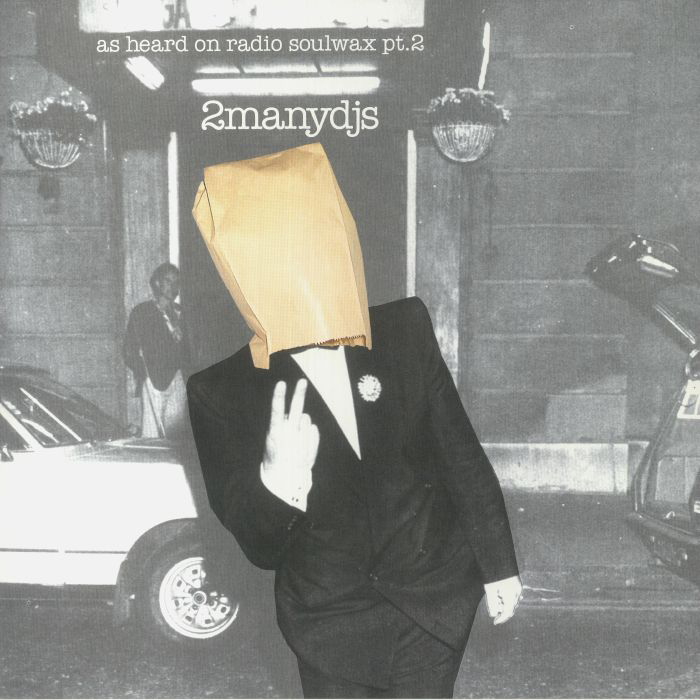
2manydjs: ‘As Heard on Radio Soulwax Part 2’ (2002)
While mashups were definitely a thing by 2002, ‘As Heard on Radio Soulwax Part 2’ brought them into the mainstream, 2manydjs’ brilliantly adventurous – and often very funny – blends of, say, The Stooges and Salt-N-Pepa proving a phenomenon.
Jacques Lu Cont: ‘FABRICLIVE 09’ (2003)
If you want to know who Stuart Price really is then look no further than his exquisite 2003 mix for the FABRICLIVE series, which lays bare his influences, from Steve Miller Band to Pixies, with an immaculate musical flow. Honourable FABRICLIVE mentions go to James Murphy, Diplo and John Peel.
Optimo (Espacio): ‘How to Kill the DJ (Part Two)’ (2004)
‘How To Kill The DJ (Part Two)’ is a genre tightrope walk of a mix from Optimo’s JD Twitch and JG Wilkes, where CLS are mixed into Gang of Four and no one bats an eyelid. Daredevil DJing at its best.

Erol Alkan: ‘A Bugged Out Mix’/‘A Bugged In Selection’ (2005)
Erol Alkan was the perfect choice for Bugged Out!’s 2000s mix series: an incredibly flexible DJ who assembled bangers for disc one and horizontal beauties for disc two. Alkan updates his ‘Bugged In’ playlist on Spotify to this day.
Daniele Baldelli: ‘Cosmic – The Original’ (2007)
Italian disco innovator Daniele Baldelli lays down an ultra-smooth mixture of Italo-Disco, electronica and synth pop as a homage to the legendary Italian club Cosmic, guaranteed to lift you up and out of your gloomy existence.
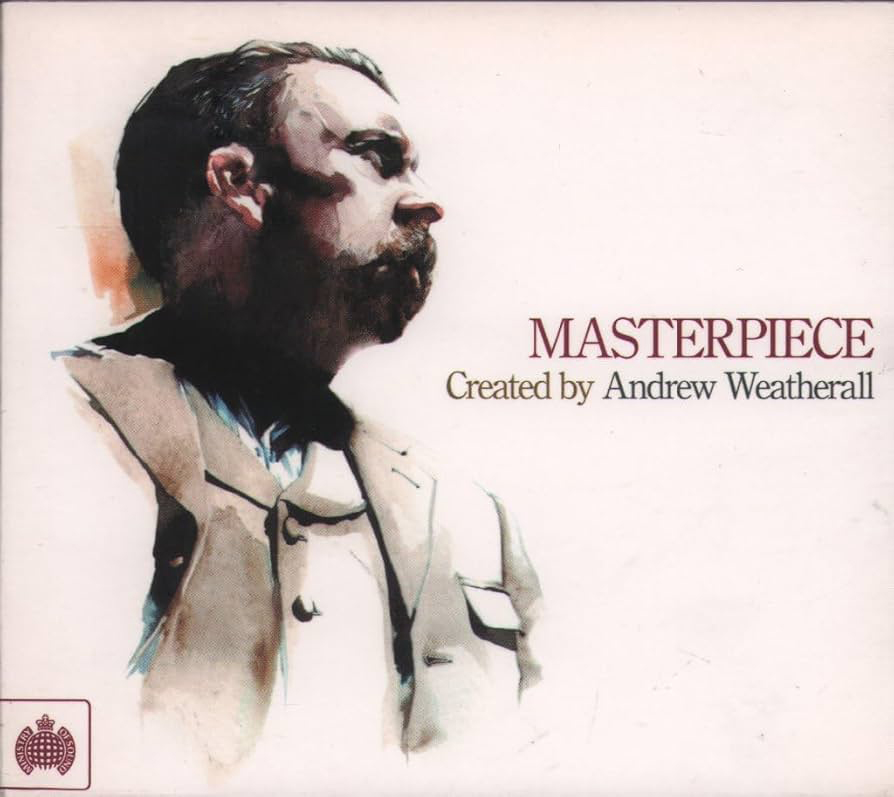
Andrew Weatherall: ‘Masterpiece’ (2012)
Weatherall put together so many great mixes you could have a top 25 of him alone. Honourable mentions for ‘Sci-Fi-Lo-Fi Vol. 1’, an ear-opening collection of rockabilly and garage classics, and his acidic ‘fabric 19’ mix. But ‘Masterpiece’, a selection of A Love from Outer Space classics, is a cut above.
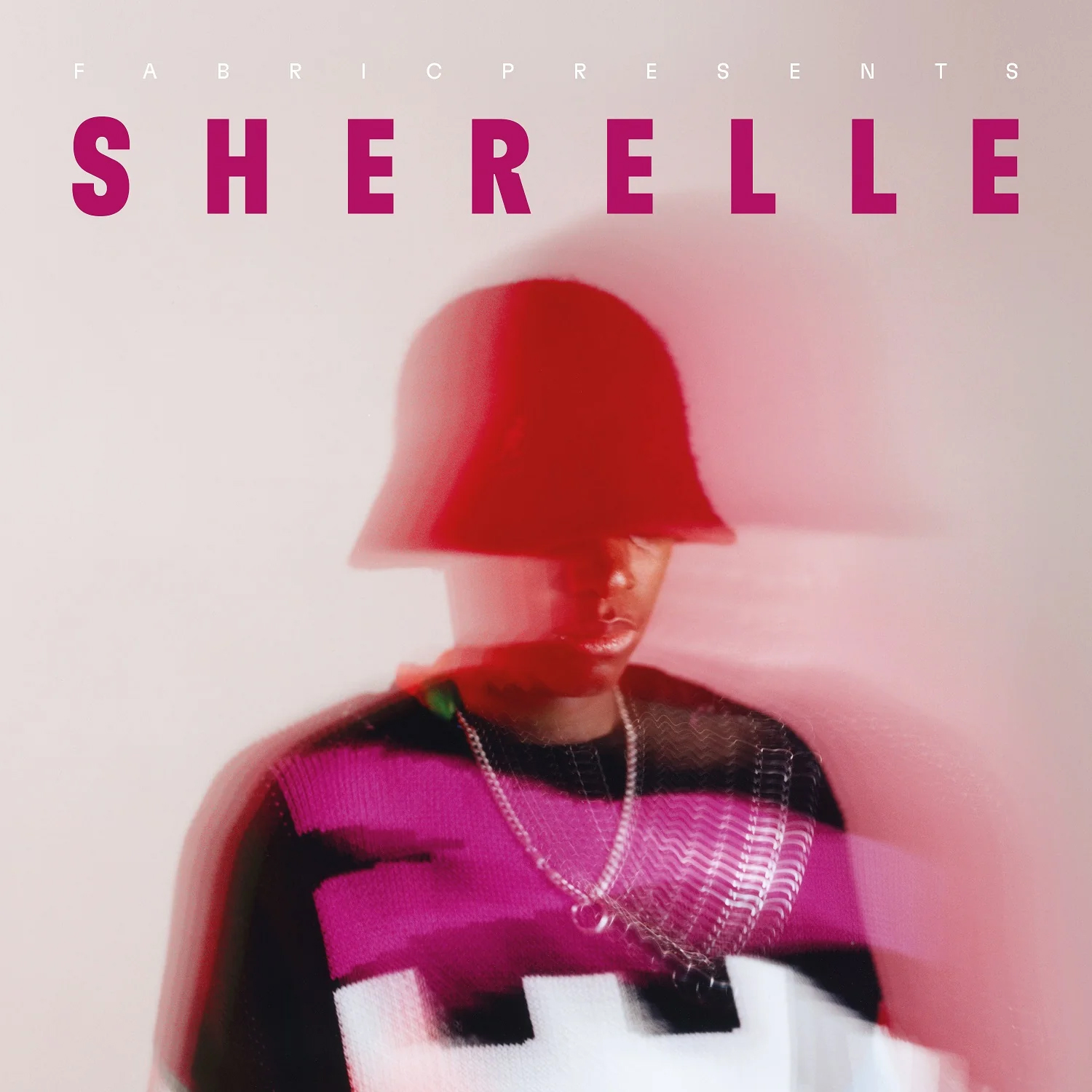
SHERELLE: ‘fabric presents SHERELLE’ (2021)
London DJ SHERELLE would have been a shoo-in for a FABRICLIVE mix, had she made her breakthrough before the series was shuttered. As it is, her rousing DJ skills, joining the dots across decades of music, produced the first classic in the fabric presents series.
From The Booth

SHERELLE
‘DJ-Kicks: Kemistry & Storm’
“Kemistry and Storm are huge heroes of mine and a real inspiration as a woman in the industry making bass music. They were integral to the birth of drum’n’bass. Their story felt forgotten about for a while but it’s great to see them get more recognition in recent years. I enjoy listening to this one on my way to gigs or when I am on a plane. I feel like I’m ready for anything after listening to this. Not one to listen to when there is turbulence though.”

Man Power
I-f: ‘Mixed Up in the Hague II’
“I was put on to this by my friend Tony Daly, who now runs 586 Records in Gateshead The mix came out in 2006, and it was a follow up to the seminal ‘Mixed Up in the Hague Part 1’ from 2001. It’s credited as one of the things that caused a resurgence in interest in Italo Disco. This was pre-social media so personal recommendations from older friends really helped me discover my own tastes. Mix CDs led me to discover what I valued in music and culture. Receiving and passing on personal recommendations has made me feel like part of a DJing tradition. Mixes like this have affected the actual music I play, but in a broader sense they’ve shaped my whole relationship with dance music.”

Jayda G
‘DJ-Kicks: Moodymann’
“I love it. It’s so well put together and really exemplifies what his sets are like. It really shows off his style, mixing great house tracks like Kings of Tomorrow’s ‘Fall For You’ with Little Dragon’s ‘Come Home’, which just shows how creative and skilled he is as a DJ. I also love how he always reps Black artists and supports the people that are really in the scene in Detroit like Marcellus Pitman. The mix feels personal too, it’s a perfect reflection of Moodymann, as it demonstrates how he likes to go leftfield and have fun with a mix. It was a big inspiration for my own DJ-Kicks mix, especially in how he mixes different genres while keeping it fun and real.”

Bicep
Ricardo Villalobos: ‘fabric 36’
“At the time this was released in the heyday of the ‘maximalist’ era, this CD looked back to the roots of refined hyper-meticulous feeling-based music. While most of the sounds from this era haven’t aged well, this sounds like it could be from any time, spanning the likes of minimalist movements in the 80s to micro-house that is still being redefined today. Upon release it was almost seen as arrogant to make a mix CD full of your own productions, but we feel only he knew precisely how the tunes were designed to work in a mix. This CD is a proper work of art that is timeless.”

Kelly Lee Owens
‘Late Night Tales: Jon Hopkins’
“I first encountered Jon Hopkins’ ‘Late Night Tales’, while working at a record store in 2015. We would frequently get new ‘Late Night Tales’ compilations on vinyl and I always looked forward to them. Each release felt like a behind-the-scenes glimpse into an artist I thought I knew, but this collection revealed a side of him I hadn’t yet experienced. At that time, Jon and I hadn’t met, but I admired his work. There was always something in his music that spoke to me – an electronic sound intertwined with spirituality and depth; qualities rarely associated with dance music. This mix gave me a deeper understanding of his art, showing me a more nuanced, intimate side to his sound.”




.svg)



